Ocean Kayaking & Sea Kayaking 101
From surfing to scuba diving to parasailing, everyone has a favorite beach activity. But what about kayaking? Even if you've enjoyed paddling down a river or two, you may not be acquainted with the joys of ocean kayaking. But it's a world unto itself, with fresh adventures, new challenges, and kayaks purpose-built for the task.
Can You Use a Kayak in the Ocean?
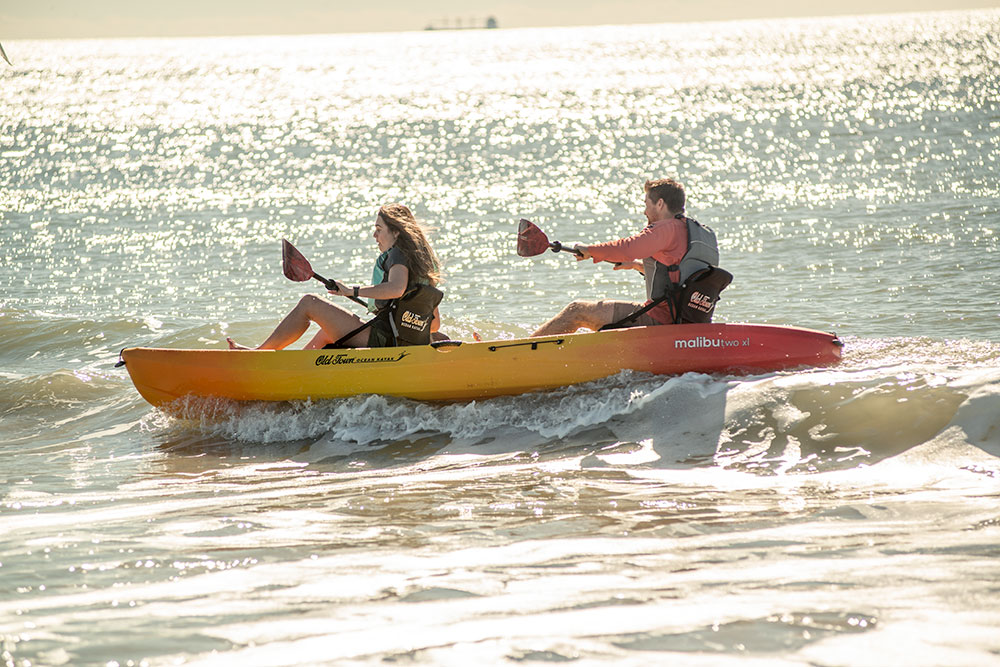
Absolutely, you can! Kayaking in the ocean is a great way to explore it. The longer distances and oceanic waters provide a great challenge for people who have the paddling and water safety basics under the belt. Plus, it's better for the environment than motorboating and it gives you a whole new perspective on the ocean. The smaller size of an ocean kayak compared to a motorboat allows you to find smaller coves and inlets that you couldn't reach any other way.
Is There a Difference Between Ocean Kayaking and Sea Kayaking?
Ocean kayaking and sea kayaking are two very similar activities that involve paddling a small, narrow boat. Although they often get confused with one another, there are distinct differences between the two types of kayaking.
One major difference is where each activity takes place. Ocean kayaking takes place in the ocean or along shorelines and harbors. This type of kayaking is often done in short trips and usually involves paddling close to the shoreline. Sea kayaking, on the other hand, takes place further away from land. This type of kayaking may involve longer trips that are typically farther out at sea and in larger bodies of water than ocean kayaking.
Another difference between the two is the type of kayak. Ocean kayaks are usually short and wide, making them more stable and easier to maneuver around shorelines and other obstacles in the water. Sea kayaks tend to be longer and narrower, which make them faster but less stable.
Ocean kayaking often involves sightseeing, wildlife watching, and exploring small areas of coastline. In comparison, sea kayaking is more about open-water paddling and endurance. Sea kayakers may sometimes need to paddle through choppy waters or even out in the open ocean.
Is It Dangerous to Kayak in the Ocean?
Kayaking in the ocean is safe, as long as it's approached with the appropriate background knowledge and a healthy dose of thoughtful good sense. Acquainting yourself with some basic kayaking safety tips is important.
Here are some quick pointers as a primer.
- Prepare for weather, including appropriate clothing for the water temperature and sun protection
- Follow all boating rules and laws in your area
- Know the basics of kayaking, including paddling techniques and self-rescue
- Wear a personal floatation device
- Have safety equipment on hand like a signaling device and first aid kit
What Kayaks Are Best For the Ocean?
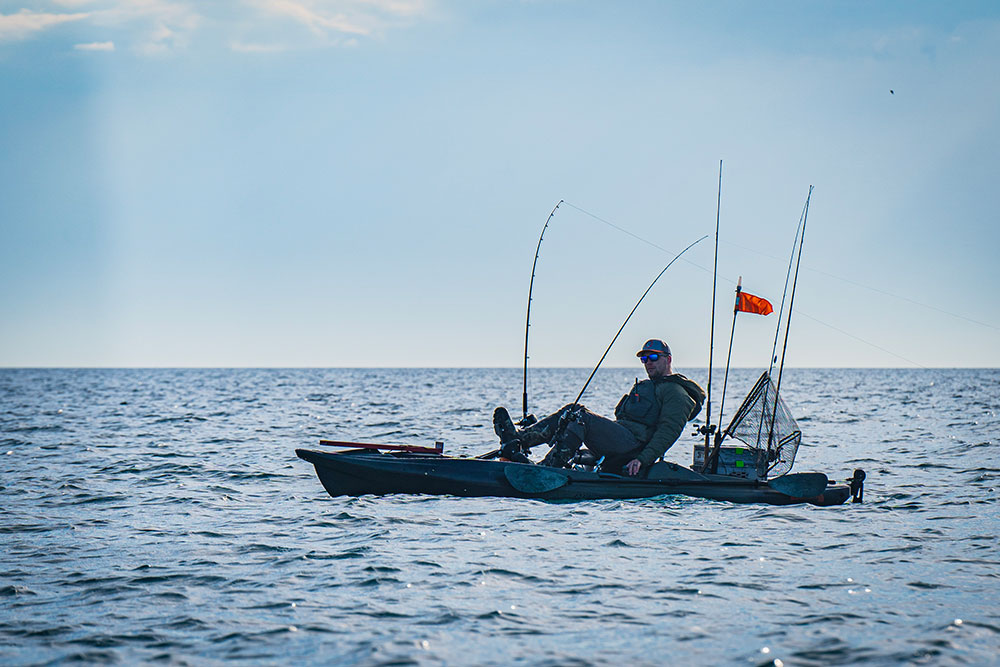
Generally, saltwater kayaks have some important design elements in common. Unless you're an experienced paddler on a long touring trip, you'll want to use a sit-on-top kayak. These kayaks have scupper holes that help drain water, and their shape makes them easier to get in and out of. If you get knocked over by a wave, a sit-on-top kayak is easier to climb back onto, and there's no way for it to fill with water and sink like a sit-in kayak.
Beyond that, it depends on what you're planning to do. If you're going fishing, you'll want a fishing kayak that's on the larger side. Most fishing kayaks are sit-on-top to begin with, but not all of them are built with the heft needed to handle the waves that saltwater fishing can throw at you. Something like the Sportsman BigWater PDL 132 can give you the stability you need out on the ocean swells. Of course, that size also means more storage space for your gear and your haul.
For general recreation, you might want something a little more nimble. A shorter kayak is a little easier to handle, and can be just as good at dealing with waves. You'll also want to look for a comfortable seat, and for features that can help keep your back and rear comfortable while you're out on the water. The Malibu solo kayaks are easy to paddle and straight-tracking, letting you conquer the waves in comfort and style.
If you're going out with a buddy, a tandem kayak like the Malibu Two is a great option. Tandem kayaks are a great option for anyone who wants to spend time with a friend, or introduce a newcomer to kayaking. It's far easier to spend quality time in a tandem boat than it is to try and yell at someone from one kayak to another.
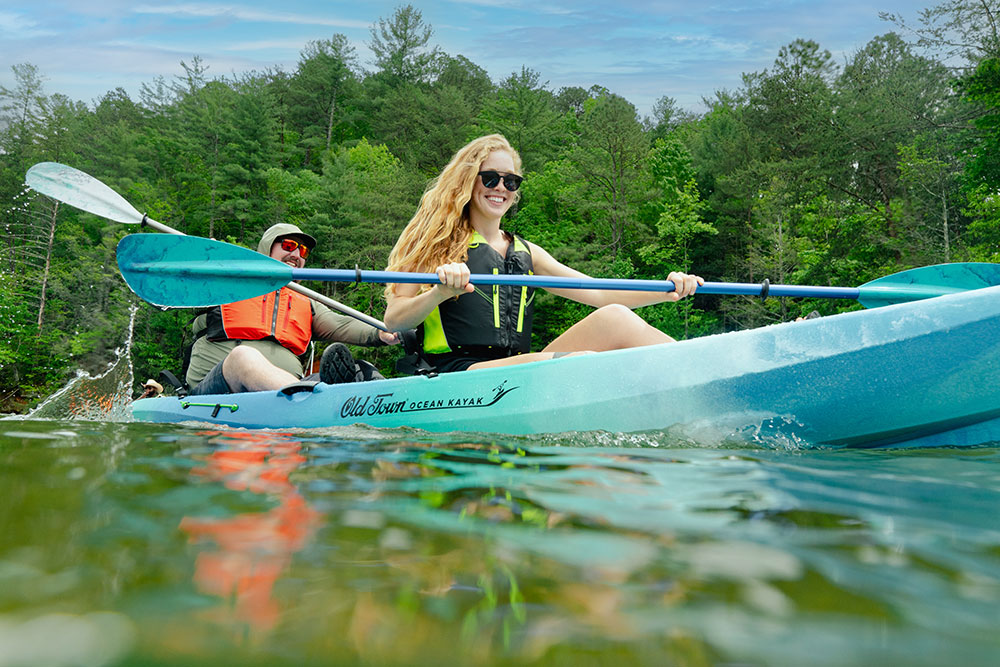
Ocean Kayaking Basics
If you're new to sea kayaking, you may need to be ready for a few unique challenges that you don't see in a river or lake. If you're new to kayaking altogether, then you'll definitely want to prepare
- Consider taking a lesson so that you can get the basics down with an expert to help you figure things out
- Developing muscle memory for the right way to do things can help you a lot down the line
- Whether you take a lesson or not, it's best to start in calm, shallow water so that you can get a feel for the basic motions without having to contend with ocean waves.
- Keep a light grip on the paddle and use long, rhythmic strokes
- Most of the motion in a good paddle stroke comes from the core, rather than the arms
- Practice your rolls, and practice making a "wet exit" so that you're prepared if your kayak flips
Ocean Kayaking Tips
Since ocean kayaking usually means longer trips and bigger waves, it's important to stock up a little and take smart precautions. Here are a few things to keep in mind as you prepare to set out on the open water.
Safety First!
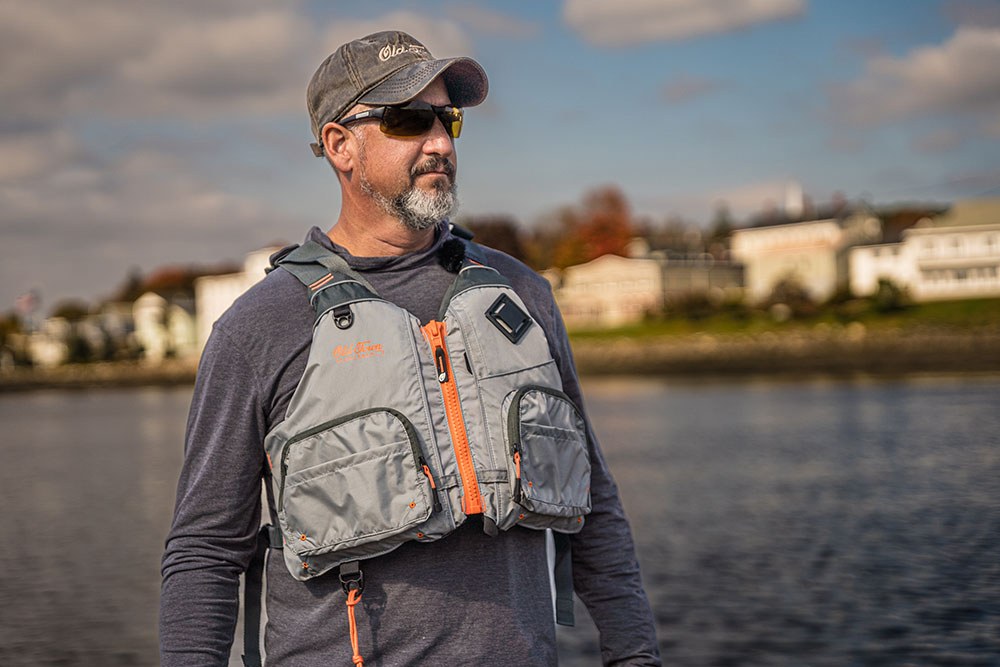
Always wear a personal floatation device (PFD) when you're out kayaking. There are several classifications of PFD. You'll want a Type III or Type V life jacket. If you're in a sit-in kayak, you'll want a spray skirt, as well.
Know What to Expect
Be prepared for a fun, safe trip by checking the weather ahead of time. While the challenge of sea kayaking is part of the fun, be smart about the water conditions that you're up to. It's also important to map out your planned route in advance, and to let people know where you're planning to be while you're away.
Bring Supplies
A good ocean kayak should have plenty of storage space, including dry storage, to help you pack for a long trip. Use that space. Bring enough water and snacks to see you through the length of your trip. Bring a change of clothes, if you need, and any navigational gear you may want. Consider using a dry bag (or another dry storage option) to protect anything sensitive that you may bring with you.
Kayaking In the Ocean Is Amazing!
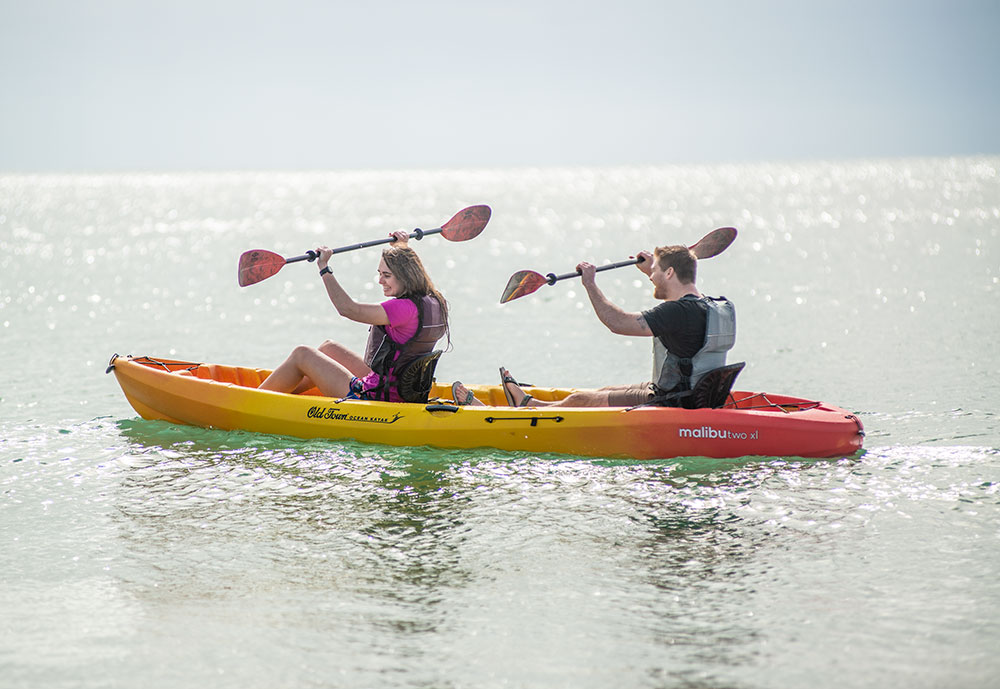
Kayaking in the ocean is a fun, exhilarating challenge. The thrill of the waves and the open water is like nothing else, especially for a well-prepared paddler with a little experience under their belt. Find a kayak that works well for you, and go hit the waves!






